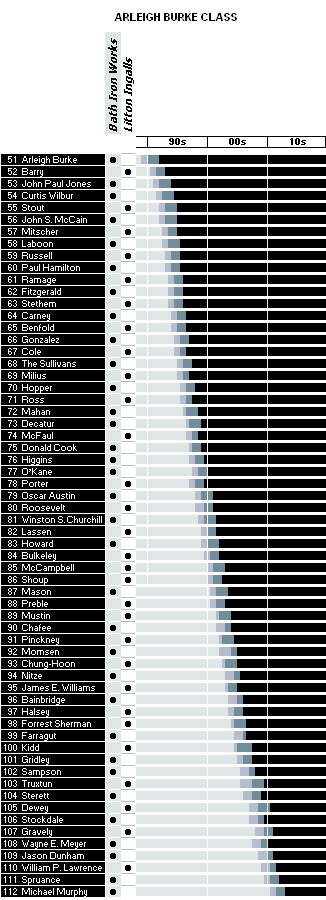The Fourth of July 1991 was a great day for the US Navy and for Admiral Arleigh “31-knot” Burke, who had retired as Chief of Naval Operations thirty years before. The occasion—the commissioning of a destroyer in his name in his 90th year—was familiar in one respect: it was part of a series of events shared with shipmates of
Destroyer Squadron 23, the “Little Beavers,” which he had commanded in the Solomon Islands in 1943–44. There had been the dedication, on 7 December 1982, of the remodeled Naval Museum at Washington Navy Yard—where his squadron had arrived to receive the group Presidential Unit Citation in a waterfront ceremony in 1945. A 1,000-person squadron reunion organized by
Converse torpedoman Red Lail the following year with a memorial service at the same site, and the christening of USS
Arleigh Burke at
Bath in September 1989, with 400 squadron members attending. Later, there was the christening and commissioning of USS
Cape St. George, a reenactment of the Battle of Cape St. George—“31-knot” Burke’s signal victory in 1943—off the Virginia Capes, and finally the death of the admiral in 1993, a memorial service in 1994, and the passing of Mrs. Burke on 4 July 1996.
For the US Navy, the event was unprecedented—no previous destroyer had been named for a living person and only the Spruance- and Kidd-class destroyers had surpassed the new ship in size—one-third longer than the 2,100-ton Fletchers of Admiral Burke’s old squadron and correspondingly heavier—though with about the same number in the ship’s compliment. USS Arleigh Burke was the most powerful surface warship yet built, with characteristics and capabilities scarcely imaginable when Admiral Burke had retired in 1961.
The occasion called for memorable words . . . and as his old shipmates knew he would be, the admiral was ready. “This ship was built to fight; you’d better know how,” he intoned, and then joined the crew of the new destroyer at the Little Beavers celebration banquet. (continued)

